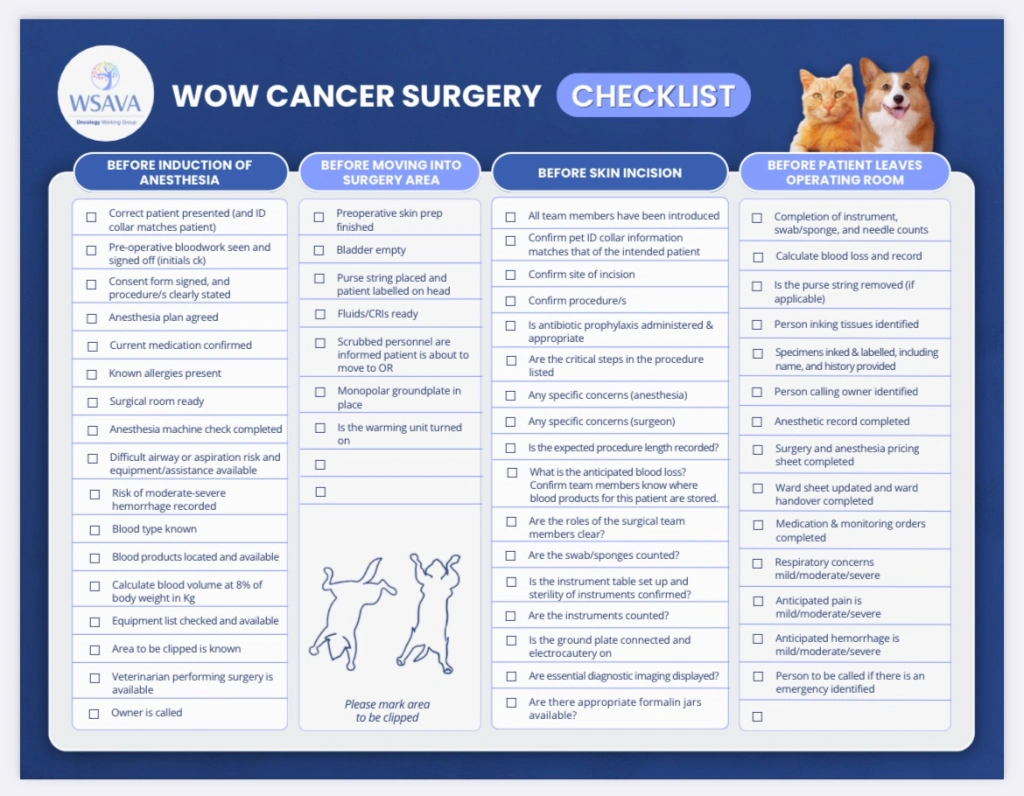
Surgery checklists in veterinary medicine serve as invaluable tools for ensuring the safety and success of surgical procedures. Modeled after the World Health Organization’s human surgical safety checklist, these protocols have been adapted to meet the specific needs of veterinary practices. They are designed to standardize and streamline pre-operative, intra-operative, and post-operative procedures.
The checklist process typically begins in the pre-operative phase. This involves confirming essential details such as patient identification, procedure to be performed, and site of surgery. It also ensures that relevant diagnostic tests and imaging have been conducted. This step is crucial in preventing errors due to miscommunication or oversight.
During the intra-operative phase, the checklist plays a pivotal role in maintaining a sterile environment and verifying that all necessary equipment and supplies are readily available. It prompts a review of critical information, such as the patient’s position, surgical site preparation, and administration of anesthesia. This stage is vital in minimizing risks associated with anesthesia and preventing surgical site infections.
Additionally, the checklist aids in confirming the surgical team’s roles and responsibilities. This collaborative approach fosters clear communication among team members, reducing the likelihood of missteps and enhancing overall efficiency. The importance of this aspect cannot be overstated, as a well-coordinated team is instrumental in achieving optimal surgical outcomes.
Post-operatively, the checklist ensures that all necessary steps are taken to monitor the patient’s recovery and provide appropriate post-operative care. This includes verifying the accuracy of recorded details such as medications administered, surgical instruments accounted for, and any specific instructions for the patient’s aftercare.
Beyond the immediate benefits, surgery checklists have been shown to have a profound impact on patient safety and outcomes. Studies have demonstrated a significant reduction in surgical complications and mortality rates in practices that implement comprehensive checklists. Moreover, they contribute to a culture of accountability and continuous improvement within veterinary surgical teams.
Furthermore, the use of surgery checklists promotes compliance with regulatory and accreditation standards. Veterinary hospitals and clinics that adhere to established protocols demonstrate a commitment to the highest standards of care, which can enhance their reputation and instill confidence in clients.
While the adoption of surgery checklists in veterinary medicine has become increasingly widespread, challenges may still arise. Resistance to change, human error, and complacency can pose barriers to effective implementation. Therefore, ongoing training, education, and regular audits are essential to ensure consistent adherence to checklist protocols.
In conclusion, surgery checklists are indispensable tools in veterinary medicine, safeguarding the well-being of animal patients and enhancing the quality of care provided. By standardizing procedures, promoting communication, and reducing the likelihood of errors, these checklists play a vital role in elevating the standards of surgical practice in veterinary medicine. Their widespread adoption and vigilant implementation are pivotal in ensuring the continued advancement of veterinary surgical care.
